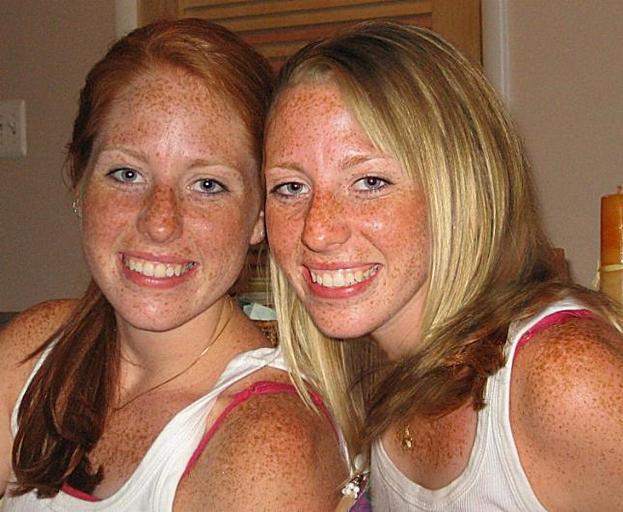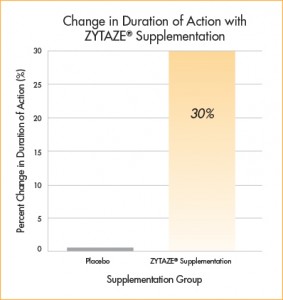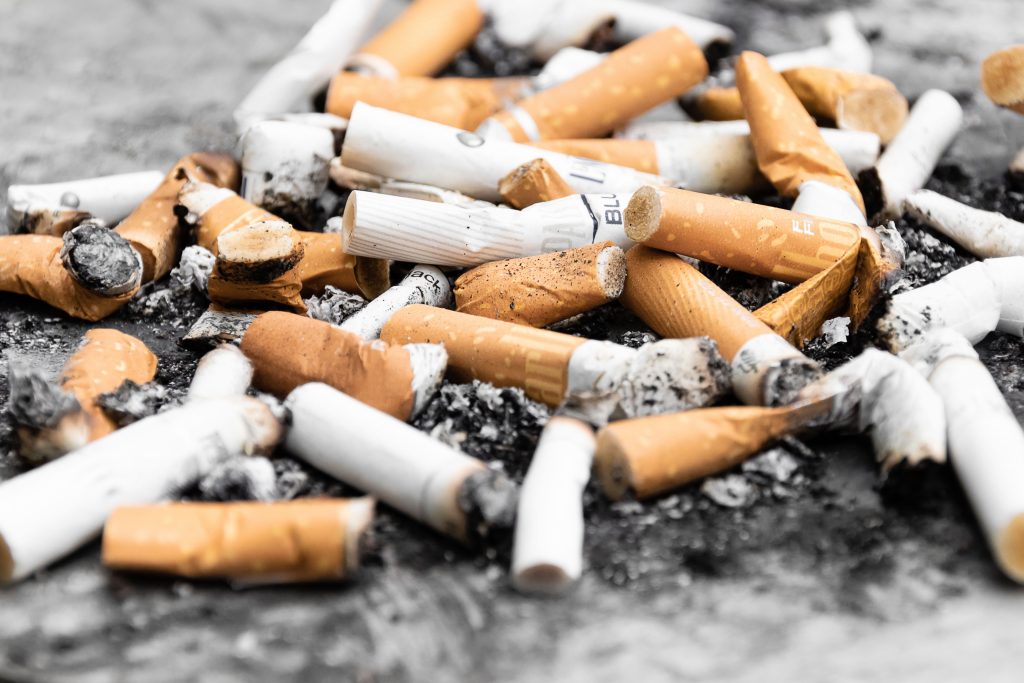SPANX & Fine lines!
By Maggie Walsh

Spanx for your crepe-y eyes
A neutral-coloured shimmery shadow is like Spanx for crepe-y eyelids: It gives the illusion of tautness.
Use a powder – not cream – shadow one shade lighter than your skin.
Fine Lines
Powder blushes, which sit on the skin’s surface, can exaggerate the look of fine lines, but cream formulas sink into skin to give a dewy finish.
Before & After Photo of the week

Undereye Circles.
we hope you enjoy the contents…..

Until the next time,
Dr Hazem Kahlout
Ms Maggie Walsh
It’s time to finally QUIT…
You’re probably aware , that smoking raises your chances of cancer and heart problems, but did you know that the habit could also have an adverse effect on the skin? Cigarette smoke can make a big impact on the formation of wrinkles and has been known to produce signs of premature aging. Deciding to quit – or at least reduce the number of cigarettes you smoke a day – could end up adding more years to your life while also giving you healthier, younger-looking skin. As with any New Year’s resolution, it’s important to be realistic about your goals. Saying that you won’t smoke a single cigarette starting at midnight on is setting yourself up for disaster. It will likely be more effective if you set benchmarks for yourself. For instance, promise yourself that you’ll be smoking three fewer cigarettes a day by .
A Healthier Diet for a healthier you?
The foods you put into your body can affect your skin and body shape. This year, make a promise to include more fruits and vegetables in your diet, and you may find that by the time 2014 rolls around, you look younger, healthier, and slimmer. Leafy greens such as spinach and cabbage as well as berries like raspberries and blueberries are known for their anti-aging properties, so add these foods to your shopping list every time you head to Tesco.
Saving up for your next procedure
If you’ve had your eye on a cosmetic procedure, but have put it off because you can’t afford it, then this year perhaps your New Year’s resolution should be to save up for the wrinkle injections or luscious lip you’ve always wanted. Alternatively you can spread your payment through Humm by FlexiFi. You can get yourself prepared for your procedure by visiting us at the clinic where we can help you figure out exactly how much you need to save to cover the costs of your procedure.
Topic highlight of the week…
Neck and Chin
The neck is an aesthetically important area of the face, and may be as important as the face in revealing one’s age. The neck is subject to many degenerative changes such as loss of collagen and elastin, accumulation of fat, and from external factors such as ultraviolet radiation. The neck and the décolletage area are particularly prone to premature ageing because these are areas of increased sun exposure.
Traditionally, neck rejuvenation has been performed surgically to help to reposition lax skin, reduce wrinkles, and to reduce redundant fatty tissues. Non-surgical neck rejuvenation has an adjunctive role to surgery and is also an alternative to surgery. Non-surgical procedures can also address the skin texture of the neck and décolletage whereas surgical procedures are unable to address this issue.
With an increasing need for minimally invasive procedures with little or no downtime, there has been a trend towards non-surgical neck rejuvenation.
Neck Rejuvenation
Various methods can be used to rejuvenate the skin and underlying tissues in the neck. The first step is to prevent further damage by daily use of sunscreen on the neck, décolletage and hands and not just the face.
Skin texture can then be addressed. The neck and decolletage are areas of the skin that may be highly exposed to UV radiation, and this causes progressive degenerative changes in the skin. These include:
Sun damage
Pigmentation, appearing as brown patches, can develop as a result of sun exposure. Also, solar (actinic) keratosis are red and scaly patches that are pre-cancerous lesions that may appear over time with cumulative sun exposure – especially on fairer skin types. The treatment of solar keratosis is not only cosmetic, but also preventative as these are pre-malignant lesions.

The skin of the neck is usually thinner and more sensitive than that of the face, and need to be treated more cautiously. Chemical peels may be used to help exfoliate dead skin cells and reduce pigmentation and solar damage. Skin care containing retinoic acid or hydroquinone can also help, but can be very irritating in this area in comparison to their effect on the face.
Laser is another means of helping to reduce brown pigmentation. The Broad Band Laser emits a green wavelength of light that is attracted to the brown pigmentation on the neck and helps to break down this pigmentation. Lasers such as the Palomar MediLux Laser and IPL can also be used for brown spots on the neck and chest area. For solar keratosis, photodynamic therapy can be implemented. Photodynamic therapy is particularly targeted to solar keratosis.
Fractional CO2 Laser treatments can be used for resurfacing the neck and to help with skin texture, wrinkles and to tighten neck skin. Carbon dioxide lasers are lasers that ablate the top layers of the skin and cause it to regenerate with fewer wrinkles and improved tightness. With fractional carbon dioxide lasers, small columns of laser are fired into the skin and parts of the skin in between these columns are left untreated. This helps to reduce the risk of treatment, and allows for much safer treatment of off-face areas than traditional (non-fractional) carbon dioxide lasers.
Poikiloderma of Civatte
Poikiloderma of Civatte is a condition that causes a red-brown discolouration on the side of the neck. The redness represents superficial capillaries and the brown discolouration is overlying pigmentation. The area that is shaded by the chin is usually spared. Poikiloderma is exacerbated by UV exposure, but the underlying cause is not known. Perfumes and various cosmetics have been implicated, as well as hormonal causes like low oestrogen levels. People with a family history of poikiloderma of Civatte as well as fair-skinned individuals are more likely to develop this condition.

Avoidance of potential causes of poikiloderma of Civatte such as perfumes, UV radiation, and various cosmetics is the first step in treating poikiloderma.
Poikiloderma is then best treated with the Profhio and Broad Band Laser combination. This helps to tighten the skin and reduce the pigmentation by closing off any superficial capillaries causing the redness. The wavelengths from these lasers are specifically attracted to the capillaries and pigmentation, and hence normal skin is relatively unaffected.
Double Chin | VASER Lipo
Excess neck fat has traditionally been treated with liposuction. This is the most effective means of removing the fat from under the chin and around the neck. VASER Lipo technology has revolutionised the neck liposuction procedure. VASER Lipo can be done under local anaesthetic with or without sedation, and usually takes about 2 hours to perform. There is usually profound retraction of neck skin when VASER Liposuction is performed in addition to the removal of fat.
Kybella
Kybella (was known in Europe as Belkyra, but from August 2024 was discontinued by Allergan) is a method of treating neck fat by fat dissolving injection. Kybella helps breakdown the fat in the neck area. There is some associated swelling post-treatment. The key advantages of Kybella are that it helps tighten the skin, and is uniform in its results.
The neck/chin is one of the best areas for treatment with Kybella as the amount of fat here is usually less than other areas of the body, and the results are more dramatic as a result. For those who don’t want to undergo surgical procedures, Kybella injections are an alternative remedy. Kybella has now been proven in obtaining reduction in the amount of fat accompanied by natural skin contraction. A number of sessions are required spaced at 6 weekly intervals.
Skin Laxity
Skin laxity of the neck is best treated with mini lift procedure. For those who don’t want to undergo surgical procedures, non-surgical methods are deployed emulate the results of surgery. Skin tightening methods such as using machines like the AntiLax uses infrared laser waves and radio-frequency to help heat the skin and stimulate collagen. The effects are usually subtle.
Suture lifting (Contour threads, Silhouette threads, Aptos threads), is a method of lifting the skin by placing a suture under the skin to pull the skin tight. The effect of these methods has been found to rejuvenate the neck for 2 years at a time. The procedures are minimally invasive and could be reproducible.
Vertical neck bands
Vertical neck bands are caused by changes in the platysma muscle which is the band of muscles from the collar bone to the jawline and can normally be seen when the teeth are clenched hard. This muscle, with time, can separate into bands and this can be aesthetically undesirable.
Anti-wrinkle injections can be injected into these bands to help flatten them. Anti-wrinkle injections can also be injected into the areas where bands are not present to help reduce the downward pull of the platysma muscle on the face. A resulting lift in the face can often result. In addition to stopping the platysma muscle bands from forming, some injections can be placed along the jawline to help stop the pull of these muscles on the face and therefore help to lift the face.
Horizontal neck Lines
Horizontal neck lines are creases in the skin of the neck caused by movement of the neck which creases the skin over time.
These bands can be treated with anti-wrinkle injections, although the success of this procedure is low. A more effective treatment for these lines is with fillers. Depending on the size of the line, an appropriate dermal filler can be injected into the lines to help fill them out. Skin tightening with AntiLax machine using infrared laser and radiofrequency energy is ideal for those not too deep neck lines. Normally 3 to 5 sessions are recommended and the results are long lasting.
Botulinum Toxin Extender
Botulinum toxins represent a family of some of the most potent naturally occurring toxins in the world, and because of their ability to inhibit muscle contractions, these toxins have been widely used in the treatment of many involuntary movement disorders and cosmetic procedures. However, to be effective, each toxin molecule must be associated with a molecule of zinc. Without zinc, the otherwise powerful botulinum toxins have little or no effect.

Botulinum toxins are made by bacteria in a laboratory, collected, purified, and then processed into a fine, dry powder. Oddly enough, if zinc is added to the toxin during processing, the toxin’s potency is greatly diminished. To be effective, Botulinum toxins must find and bind zinc in human tissues after being injected. If a person has inadequate amounts of zinc in their tissues, then the botulinum toxin will have a significantly decreased effect.
Patient-specific change in duration of botulinum toxin effect compared to no supplementation following pre-injection supplementation with laculose placebo or 50 mg zinc citrate and 3,000 U phytase (ZYTAZE® Supplementation).
Zinc levels are increased by eating zinc, and although numerous foods such as poultry, beef, pork, eggs, whole grains, beans, and legumes are relatively rich in zinc, many of these as well as other foods simultaneously block zinc absorption. Zinc supplements found in local natural food, or vitamin stores are an alternative resource, but some forms of zinc are much better absorbed than others, and taking a poorly absorbed form of zinc can compete for absorption with better zinc available through foods, which can be worse than taking no zinc at all.
There are a number of reasons why zinc absorption may be inhibited. Blocked absorption is one, and perhaps the biggest culprits responsible are phytates, a group of phosphate-containing compounds that tightly bind zinc in the intestinal track and prevent zinc absorption. As little as 0.26 grams of phytate will inhibit the absorption of 50 mg of pure zinc. Phytates are found in whole grain breads, whole-wheat products, many cereals, soy, oats, legumes (including peas, peanuts, and peanut butter), beans, corn, nuts, and rice. Unfortunately, many of the foods rich in zinc also contain phytates, so it can be very difficult to increase and monitor zinc levels through diet alone.
ZYTAZE® is specially formulated with a unique patent-pending combination of highly bioavailable, organic zinc along with phytase (an enzyme that effectively breaks down phytates) to maximize zinc absorption, thereby enhancing the effectiveness of botulinum toxin injections.
A recent pilot study*, utilizing ZYTAZE® demonstrated that increasing zinc levels for 4 days prior to a planned botulinum toxin injection resulted in an increase in both the treatment effect as well as duration. Importantly, the study included blepharospasm, hemifacial spasm and cosmetic patients. This study suggests that using ZYTAZE® may lead to fewer toxin injections at a lower dose and with less treatment-to-treatment variability in effect.
In the completed formal study* consisting of 77 patients, ZYTAZE® again demonstrated a significant increase in the effect of botulinum toxin injections.
In fact, the duration of effect increased from 23.6% in the pilot study to be 30% in the completed formal study.






Leave a reply